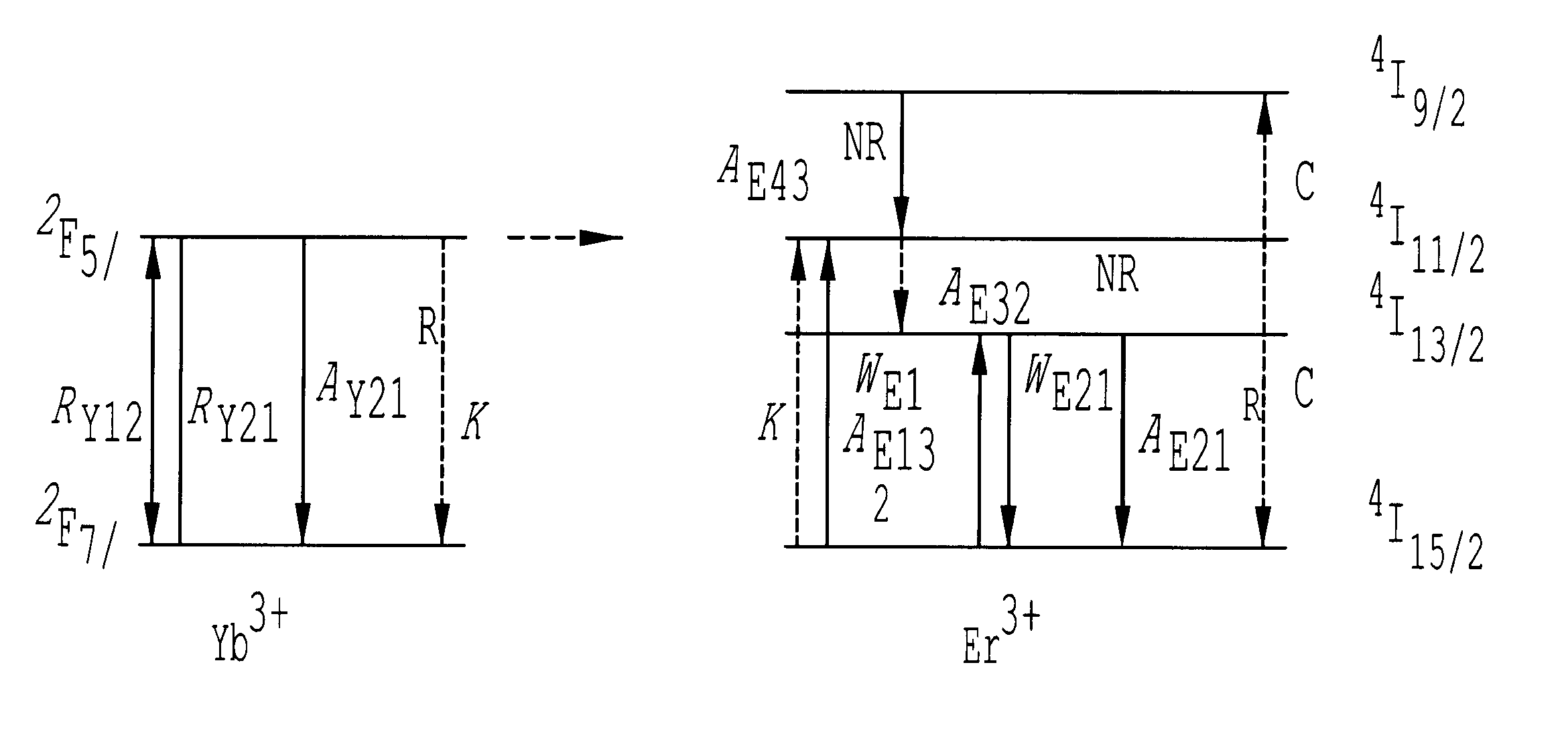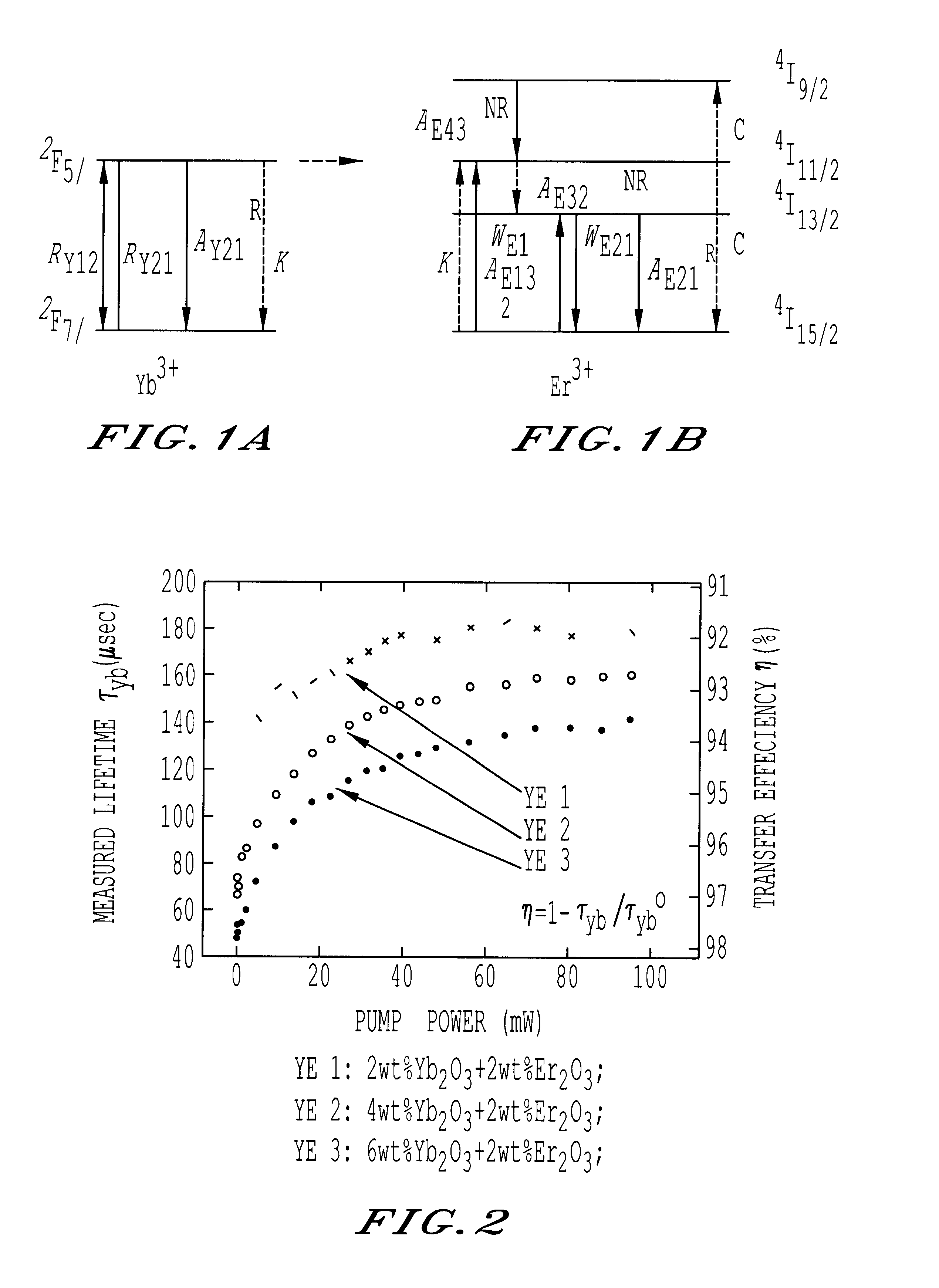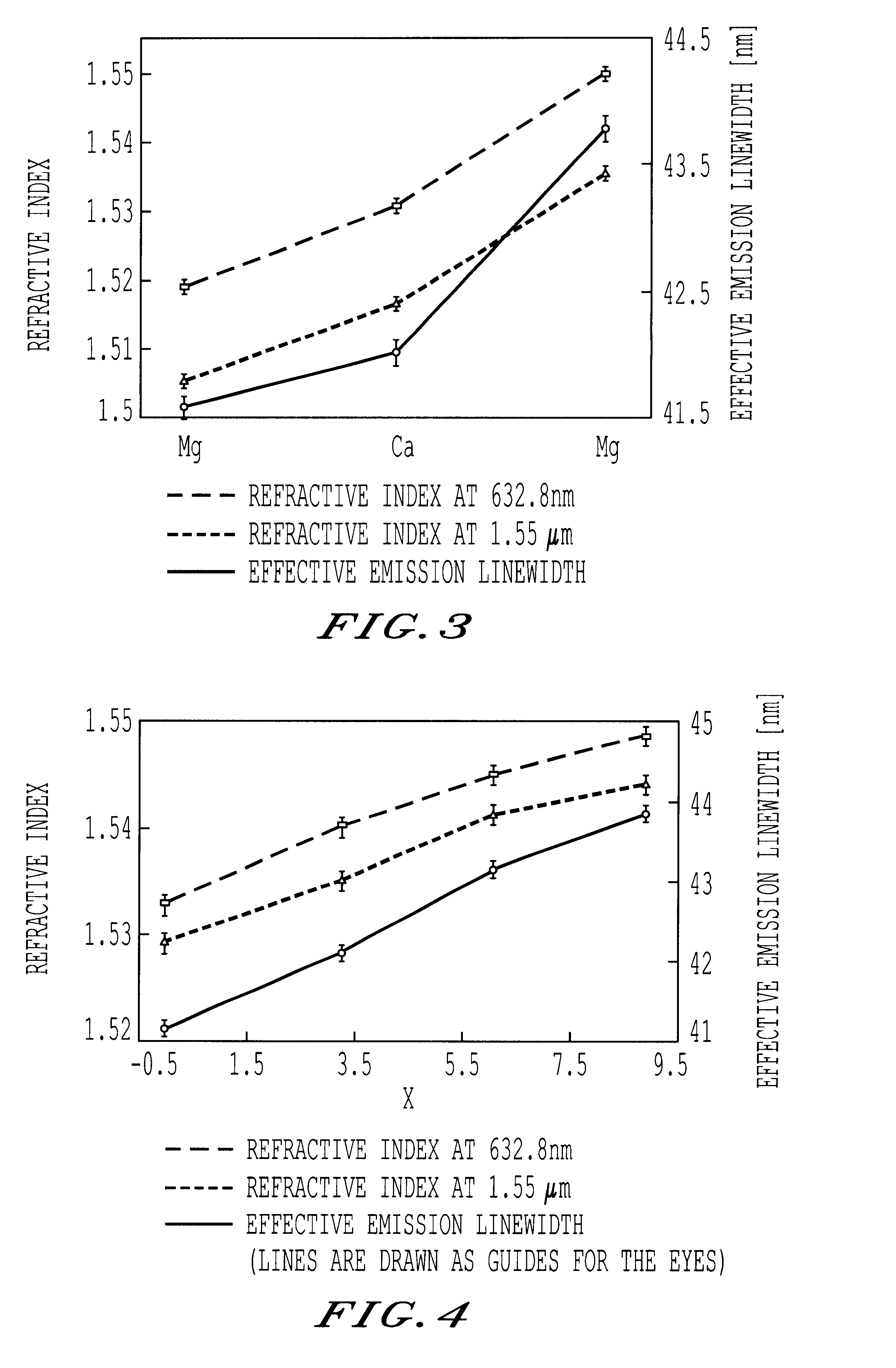Erbium and ytterbium co-doped phosphate glass optical fiber amplifiers using short active fiber length
a technology of phosphate glass and optical fiber, which is applied in the direction of electromagnetic transmission, transmission, active medium materials, etc., can solve the problems of affecting the performance of optical fiber amplifiers
- Summary
- Abstract
- Description
- Claims
- Application Information
AI Technical Summary
Benefits of technology
Problems solved by technology
Method used
Image
Examples
Embodiment Construction
Referring now to the drawings, wherein like reference numerals designate identical or corresponding parts throughout the several views, FIG. 1 is a schematic energy level diagram of a Yb.sup.3+ and Er.sup.3+ ionic energy levels in a phosphate glass host.
According to one embodiment of the present invention, pumping of an erbium-doped phosphate glass populates the erbium metastable state creating a population inversion which under an input signal produces stimulated emission and amplification of the input signal. More specifically, the amplification process is explained in reference to energy levels shown in FIG. 1. The Er.sup.3+ ionic energy states are shown on the right hand side of FIG. 1. Typically, a pump light excites electrons from the ground state .sup.4 I.sub.15 / 2 to an upper energy state such as .sup.4 I.sub.11 / 2. Higher erbium doping levels allows more absorption of the pump light and ultimately higher gain. Once electrons are excited to the .sup.4 I.sub.11 / 2 state, relaxat...
PUM
| Property | Measurement | Unit |
|---|---|---|
| length | aaaaa | aaaaa |
| length | aaaaa | aaaaa |
| diameter | aaaaa | aaaaa |
Abstract
Description
Claims
Application Information
 Login to View More
Login to View More - R&D
- Intellectual Property
- Life Sciences
- Materials
- Tech Scout
- Unparalleled Data Quality
- Higher Quality Content
- 60% Fewer Hallucinations
Browse by: Latest US Patents, China's latest patents, Technical Efficacy Thesaurus, Application Domain, Technology Topic, Popular Technical Reports.
© 2025 PatSnap. All rights reserved.Legal|Privacy policy|Modern Slavery Act Transparency Statement|Sitemap|About US| Contact US: help@patsnap.com



